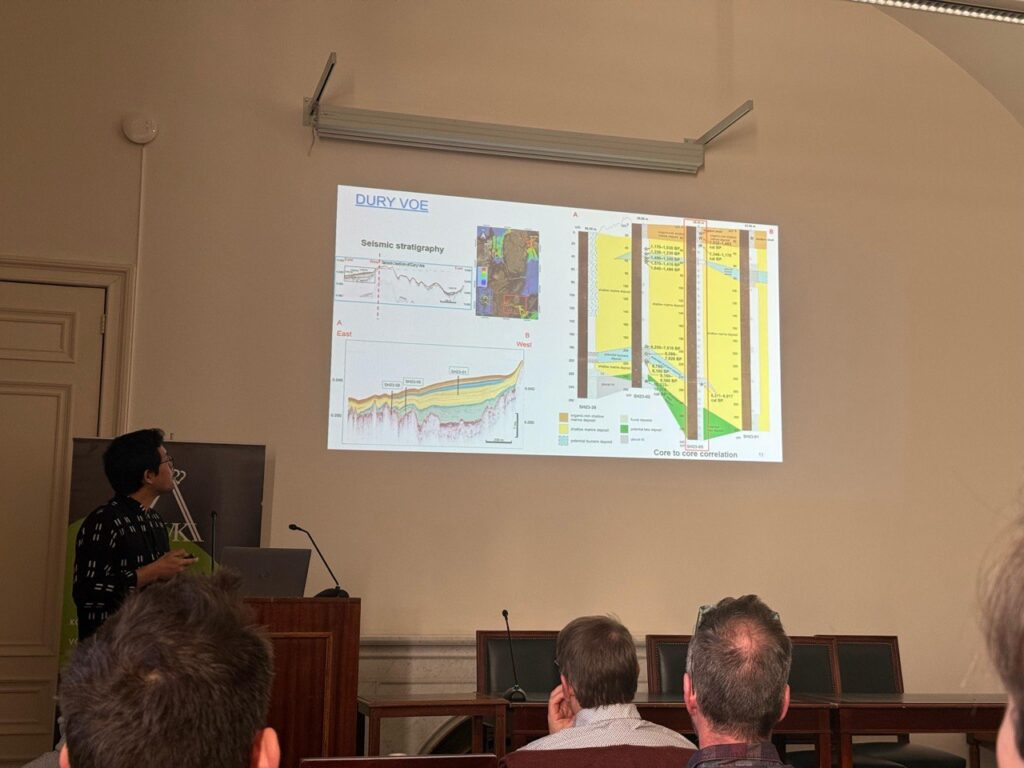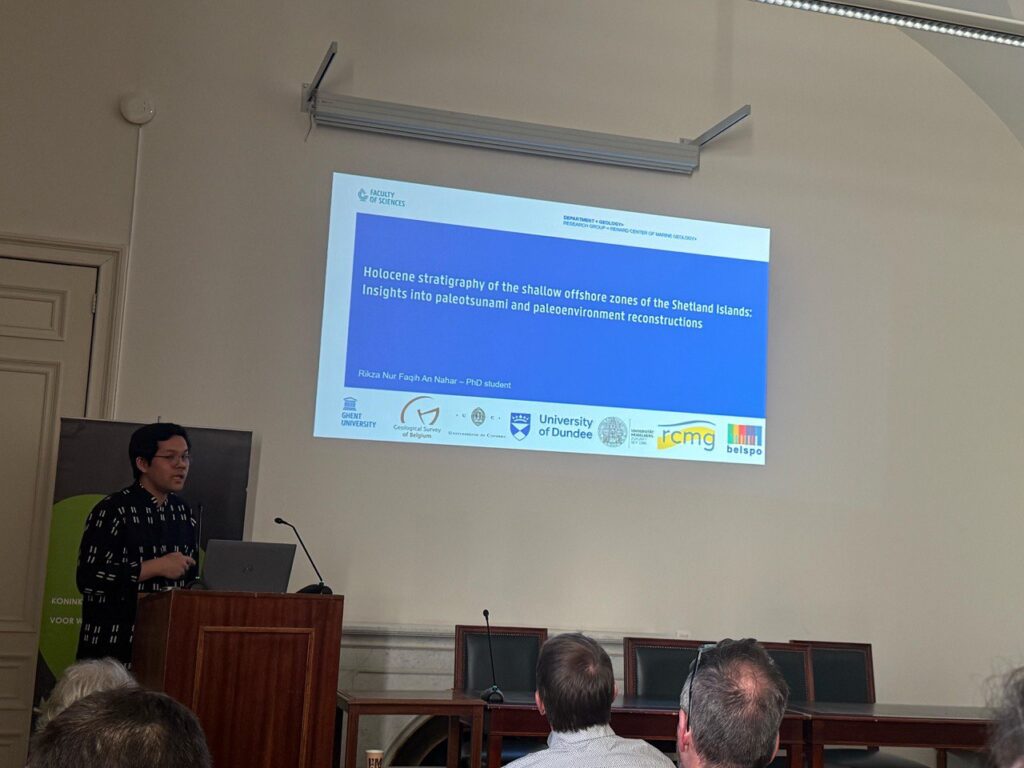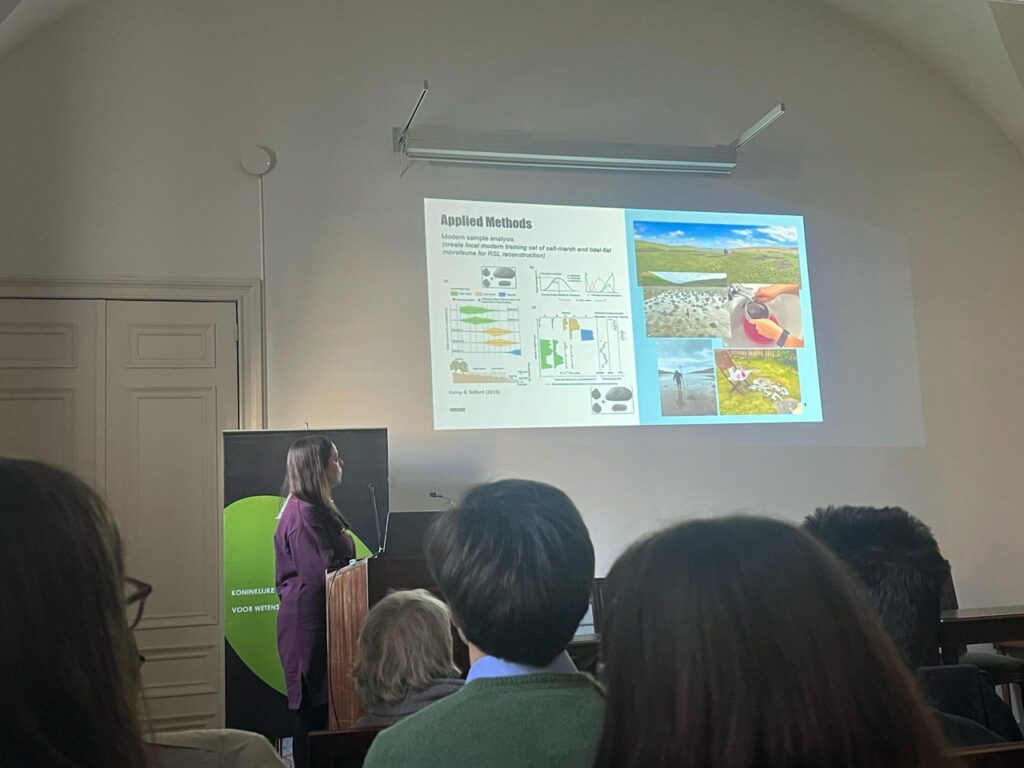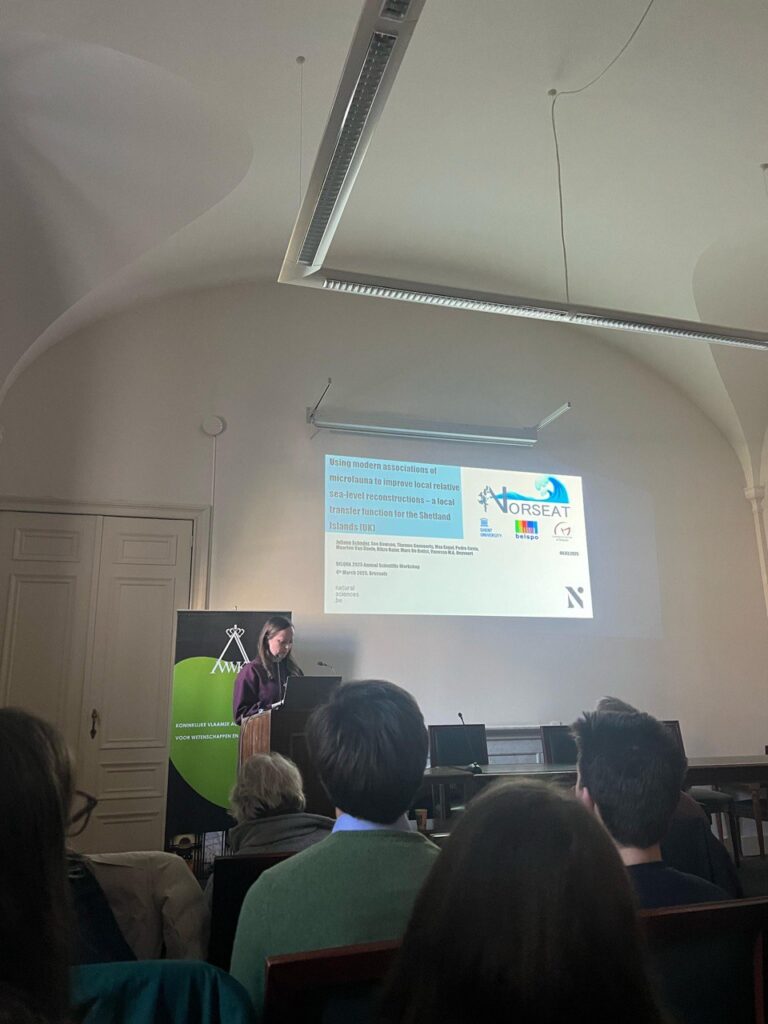NORSEAT Researchers Present Key Findings on Holocene Coastal Evolution and Sea-Level Change in Belgium
Date: Tuesday, 4 March 2025
Location: Belgium
Two of NORSEAT’s researchers, Rikza and Juliane, recently presented groundbreaking developments from the project at a gathering of Quaternary geology experts in Belgium. Their presentations offered deep insights into the Holocene history of the Shetland Islands and the methodologies being developed to better understand coastal hazards and sea-level changes through time.


🔹 Uncovering Ancient Tsunami Layers: Rikza’s Presentation
Before the lunch break, Rikza introduced his research on:
“Holocene Stratigraphy of the Shallow Offshore Zones of the Shetland Islands: Insights into Palaeotsunami and Paleoenvironment Reconstructions”
His talk focused on the evolution of the coastal environment in the shallow offshore areas around the Shetland Islands. Utilizing seismic facies identification, he reconstructed past environmental conditions and their transformation over time.
Complementary sedimentological data, including grain size analysis and XRF-based geochemical profiling, revealed the presence of distinct sedimentary layers. These layers are interpreted as tsunami deposits, associated with the Storegga event and other Late Holocene palaeotsunamis. The findings suggest episodic interruptions in otherwise tranquil shallow marine sedimentation, offering vital clues into the prehistoric dynamics of the region.


🔹 Reconstructing Sea Levels with Microfauna: Juliane’s Presentation
In the afternoon, Juliane presented her research titled:
“Using Modern Associations of Microfauna to Improve Local Relative Sea-Level Reconstructions”
Juliane emphasized the significance of high-resolution relative sea-level (RSL) reconstructions for improving coastal hazard assessments and the planning of future protection strategies. Her work is particularly relevant to NORSEAT’s goal of understanding tsunami risks in the Shetland Islands.
She introduced a preliminary transfer function model developed from microfaunal data, which showed a strong correlation (0.94) between measured and reconstructed elevations. However, the initial model had a vertical error of approximately 40% of the mean tidal range. Juliane noted that incorporating the full dataset is expected to refine the model and improve its predictive power.
The final version of this model will be applied to Holocene shallow-marine sediment cores collected offshore Shetland. The improved RSL reconstructions will provide more accurate estimates of tsunami run-up heights—not only for the Storegga event but also for two younger palaeotsunami events identified in the area.
🌍 Looking Ahead
These presentations mark an important milestone in the NORSEAT Project, pushing forward our understanding of Holocene sea-level fluctuations and extreme events in the North Sea region. The research contributes valuable data and methodologies to the broader scientific community, with real-world implications for coastal hazard assessment and climate resilience.
Stay tuned as the NORSEAT team continues to explore the past to better prepare for the future.